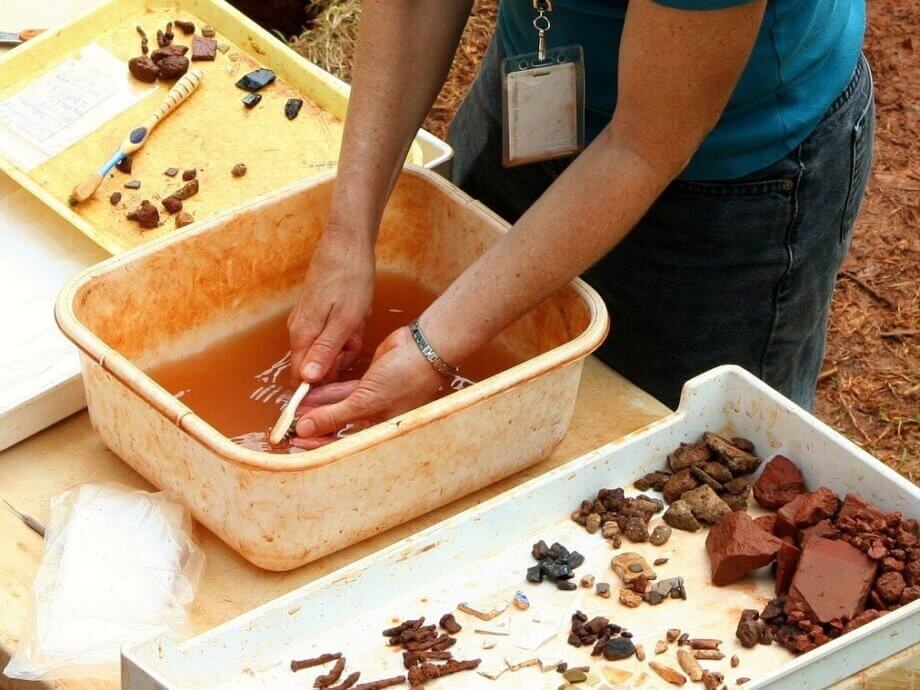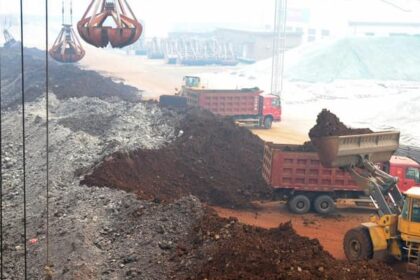Introduction: A Landmark Discovery in Human Evolution
A fossilized jawbone dredged from the seafloor off Taiwan has been conclusively identified as belonging to a Denisovan, a mysterious lineage of archaic humans. This breakthrough, achieved through advanced molecular analysis of ancient proteins, not only expands the known range of Denisovans but also reshapes our understanding of human evolution and migration across Eurasia. The find, known as Penghu 1, marks the first time Denisovan remains have been confirmed outside the cold, high-altitude regions of Siberia and the Tibetan Plateau, revealing that these ancient humans thrived in a far wider array of environments than previously thought.
- Introduction: A Landmark Discovery in Human Evolution
- What Are Denisovans? Unraveling an Enigmatic Lineage
- The Penghu 1 Jawbone: From Seafloor to Science
- Paleoproteomics: Unlocking Secrets from Ancient Proteins
- Dating the Fossil: A Window into the Pleistocene
- Denisovan Adaptability: From Siberia to the Tropics
- Physical Traits: What Did Denisovans Look Like?
- Implications for Human Evolution and Migration
- The Future of Denisovan Research: New Techniques, New Discoveries
- In Summary
What Are Denisovans? Unraveling an Enigmatic Lineage
Denisovans are an extinct group of archaic humans closely related to Neanderthals and modern Homo sapiens. First identified in 2010 from DNA extracted from a finger bone in Denisova Cave, Siberia, Denisovans have since been recognized as a distinct branch of the human family tree. Genetic studies show that Denisovans, Neanderthals, and modern humans share a common ancestor who lived in Africa about 600,000 years ago. The Denisovan and Neanderthal lineages split around 400,000 years ago, with Neanderthals spreading west into Europe and Denisovans moving east across Asia.
Despite their genetic legacy—traces of Denisovan DNA are found in many modern populations in Asia and Oceania—physical remains of Denisovans are exceedingly rare. Until now, confirmed Denisovan fossils were limited to a handful of bones and teeth from Siberia and the Tibetan Plateau. The discovery of the Penghu 1 jawbone in Taiwan provides crucial new evidence about the distribution, adaptability, and physical characteristics of this elusive group.
The Penghu 1 Jawbone: From Seafloor to Science
The story of the Penghu 1 jawbone began in the early 2000s, when fishermen dredged up a robust human mandible with five teeth attached from the Penghu Channel, about 25 kilometers off Taiwan’s west coast. The seafloor in this region was once dry land, forming a land bridge between Taiwan and mainland Asia during periods of low sea level in the Pleistocene epoch. The jawbone eventually found its way to a Taiwanese antique shop, where it caught the attention of amateur fossil hunter Kun-Yu Tsai. Recognizing its significance, Tsai purchased the fossil and donated it to Taiwan’s National Museum of Natural Science.
Initial studies of Penghu 1, published in 2015, noted its unusual features: a very thick mandible and large teeth, distinct from those of modern humans and Neanderthals. However, the fossil’s exact identity remained a mystery, as attempts to extract ancient DNA failed—likely due to the fossil’s long submersion in seawater, which accelerates DNA degradation.
Paleoproteomics: Unlocking Secrets from Ancient Proteins
With DNA analysis off the table, researchers turned to a cutting-edge technique known as paleoproteomics—the study of ancient proteins preserved in fossils. Proteins, which are more durable than DNA, can survive in conditions where genetic material is lost. By analyzing the amino acid sequences of proteins extracted from the jawbone and its dental enamel, scientists hoped to find molecular signatures unique to Denisovans.
Takumi Tsutaya of Japan’s Graduate University for Advanced Studies and an international team of experts carefully drilled a small hole in the jawbone, collecting bone powder for analysis. They successfully extracted over 4,200 amino acid residues and identified two protein variants found only in Denisovans, not in Neanderthals or modern humans. This molecular evidence provided the “smoking gun” needed to confirm the jawbone’s Denisovan origin.
Further analysis of the dental enamel revealed protein fragments related to the Y-chromosome, indicating that the individual was male. This finding aligns with other molecularly confirmed Denisovan fossils, all of which have so far been identified as male, leaving open questions about potential differences between Denisovan males and females.
Dating the Fossil: A Window into the Pleistocene
Determining the age of the Penghu 1 jawbone has proven challenging. Traditional dating methods, such as radiocarbon and uranium-series dating, were unsuccessful due to the fossil’s waterlogged condition and lack of contextual sediment. Instead, researchers relied on indirect evidence, including animal fossils found with the jawbone and models of ancient sea levels.
These clues suggest two possible age ranges for the fossil: either 10,000 to 70,000 years ago or 130,000 to 190,000 years ago. If Penghu 1 falls within the younger range, it could represent the youngest-known Denisovan fossil, potentially surviving until the very end of the Denisovan lineage. The uncertainty underscores the need for further discoveries and improved dating techniques.
Denisovan Adaptability: From Siberia to the Tropics
The identification of a Denisovan in Taiwan dramatically expands the known geographic range of this ancient human group. Previously, Denisovan fossils had only been found in the cold, high-altitude environments of Siberia and the Tibetan Plateau. The Penghu 1 jawbone, however, shows that Denisovans also inhabited warm, humid, lowland regions—demonstrating a remarkable adaptability once thought unique to Homo sapiens.
Fabrice Demeter, a paleoanthropologist at the University of Copenhagen, commented on the significance of this adaptability:
“It shows that Denisovans were able to adapt to various environments—an ability that we only thought Homo sapiens capable of.”
This adaptability is further supported by genetic evidence. Modern populations in East and Southeast Asia, as well as Oceania, carry Denisovan DNA, indicating that Denisovans interbred with early modern humans across a vast area. Notably, people on the island of Luzon in the Philippines—just south of Taiwan—have some of the highest levels of Denisovan ancestry, suggesting that Denisovans may have reached or even crossed into island Southeast Asia.
Physical Traits: What Did Denisovans Look Like?
With so few Denisovan fossils available, reconstructing their appearance is a challenge. However, the Penghu 1 jawbone and other remains provide some clues. Denisovans appear to have had robust jaws and large molars, contrasting with the smaller teeth and more gracile mandibles of Neanderthals. The Penghu 1 jaw lacks a prominent chin, a feature typical of modern humans, and its teeth are exceptionally large—even compared to Neanderthals.
Ryan McRae, a paleoanthropologist at the Smithsonian National Museum of Natural History, explained:
“Neither mandible has a chin, like modern humans do, so the front of their jawline would probably look flatter than ours. The authors wisely point out that the Penghu mandible is male, which means that it may exhibit the larger, more robust end of variation for this species. In other words, female Denisovans could look the same, or quite different, we just don’t know yet.”
Interestingly, both the Penghu 1 and the Tibetan Denisovan mandibles lack wisdom teeth, a trait more commonly associated with modern humans. This combination of primitive and derived features highlights the unique evolutionary path of Denisovans within the genus Homo.
Implications for Human Evolution and Migration
The discovery of the Penghu 1 jawbone has far-reaching implications for our understanding of human evolution. It provides direct evidence that Denisovans were not confined to the harsh climates of northern and central Asia but were capable of thriving in diverse environments, from frigid mountains to subtropical coasts. This adaptability may have facilitated their interactions and interbreeding with other human groups, including Neanderthals and Homo sapiens.
Frido Welker, a molecular anthropologist and co-author of the study, emphasized the importance of the find:
“We have so little archaeological and fossil information about Denisovans that we can only speculate as to why they disappeared. A lasting legacy, though, is that some human populations in East and Southeast Asia carry some Denisovan ancestry in their genomes today.”
The presence of Denisovan DNA in modern humans, especially in populations of Southeast Asia and Oceania, supports the idea of widespread Denisovan dispersal and interaction with migrating Homo sapiens. The Penghu 1 fossil adds a crucial piece to this puzzle, suggesting that Denisovans may have played a significant role in the peopling of Asia and the Pacific.
The Future of Denisovan Research: New Techniques, New Discoveries
The successful use of paleoproteomics to identify the Penghu 1 jawbone as Denisovan opens new avenues for the study of ancient human fossils, especially in regions where DNA preservation is poor. As more museums and collections revisit their holdings with these advanced techniques, it is likely that additional Denisovan remains will be identified, further illuminating the story of this enigmatic group.
Chun-Hsiang Chang, a paleontologist at Taiwan’s National Museum of Natural Science, expressed optimism about future discoveries:
“Maybe inside my collection there’s some treasure we don’t know about.”
With thousands of fossils recovered from the seabed in the Taiwan Strait alone, the potential for new insights into Denisovan distribution, diversity, and adaptation is immense. Each new find brings us closer to understanding the complex web of human evolution in Asia and beyond.
In Summary
- The Penghu 1 jawbone, found off Taiwan, has been conclusively identified as Denisovan through advanced protein analysis.
- This discovery expands the known range of Denisovans from Siberia and Tibet to subtropical Taiwan, demonstrating their adaptability to diverse environments.
- Paleoproteomics, the study of ancient proteins, enabled identification where DNA analysis failed, marking a significant advance in fossil research.
- The jawbone belonged to a male individual, with robust features and large teeth, adding to our understanding of Denisovan anatomy.
- Dating the fossil remains challenging, but it may be as young as 10,000 years old, potentially making it the youngest-known Denisovan fossil.
- The find supports genetic evidence of Denisovan interbreeding with modern humans across Asia and Oceania.
- Future research using molecular techniques may uncover more Denisovan fossils, further illuminating their role in human evolution.












